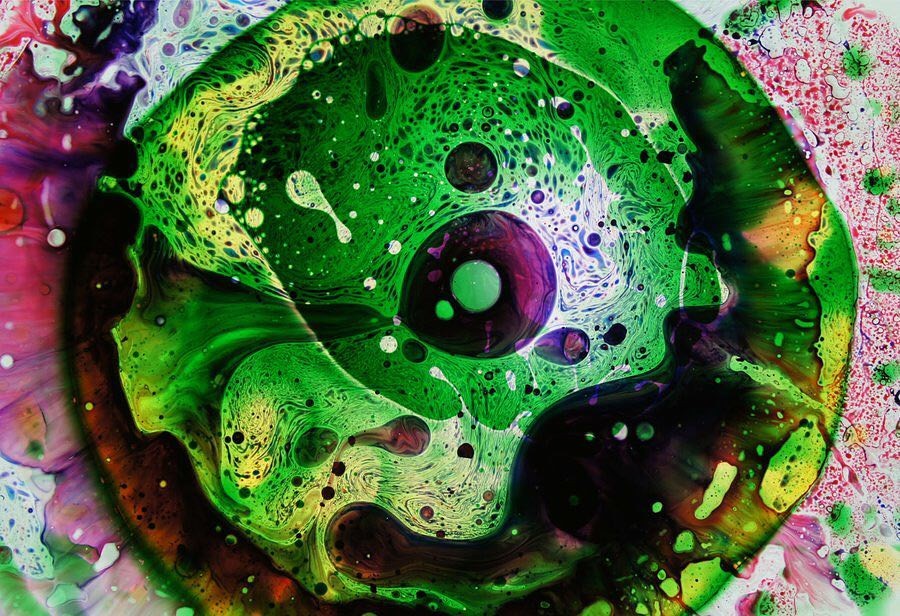
What is liquid-liquid phase separation (LLPS)?
 The example of vinaigrette preparation illustrates a simplified version of liquid-liquid phase separation. After powerful mixing, the oil and vinegar in the mixture are transformed into a separated, two-phase system after a short time. This has a lower free energy than the fully mixed state, due to the interacting elements in the mixture. In the dressing, homotypic interactions between oil molecules or water molecules (vinegar) and heterotypic interactions between water and oil molecules occur. When homotypic interactions are stronger than heterotypic interactions, mixing is unfavourable and a two-state system with lower free energy and phase separation is formed, i.e. a phase transition occurs.
The example of vinaigrette preparation illustrates a simplified version of liquid-liquid phase separation. After powerful mixing, the oil and vinegar in the mixture are transformed into a separated, two-phase system after a short time. This has a lower free energy than the fully mixed state, due to the interacting elements in the mixture. In the dressing, homotypic interactions between oil molecules or water molecules (vinegar) and heterotypic interactions between water and oil molecules occur. When homotypic interactions are stronger than heterotypic interactions, mixing is unfavourable and a two-state system with lower free energy and phase separation is formed, i.e. a phase transition occurs.
Within the last decade of neurobiology, liquid-liquid phase separation (LLPS) has gained increasing attention to interpret altered synaptic functions in multiple neurodevelopmental disease phenotypes. Liquid-liquid phase separation is a mechanism by which a homogeneous liquid solution of molecules, such as nucleic acids or proteins, spontaneously separates into distinct phases. LLPS dysfunctions are now thought to underlie several neurodevelopmental disorders, including schizophrenia, attention deficit hyperactivity disorder (ADHD), autism spectrum disorder (ASD), and fragile-X syndrome.

